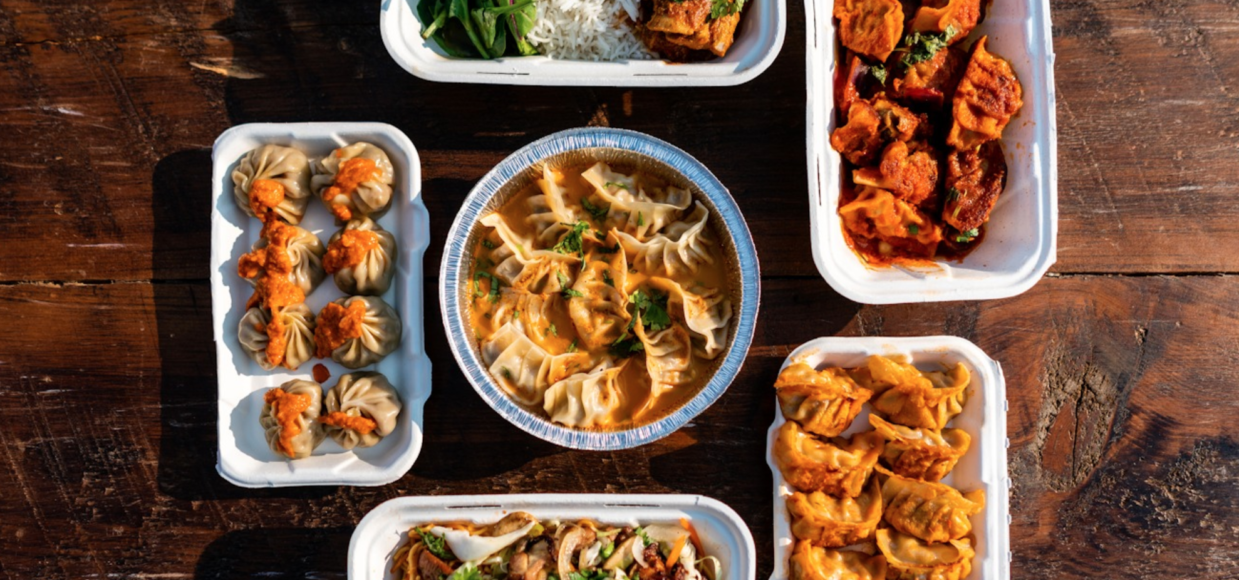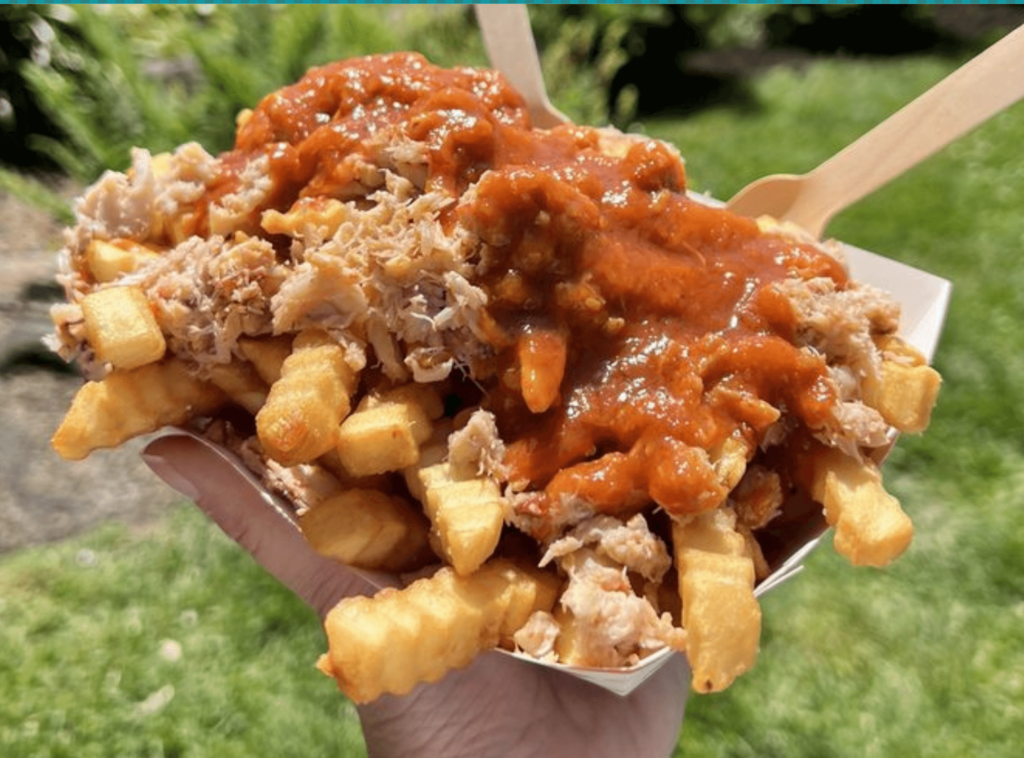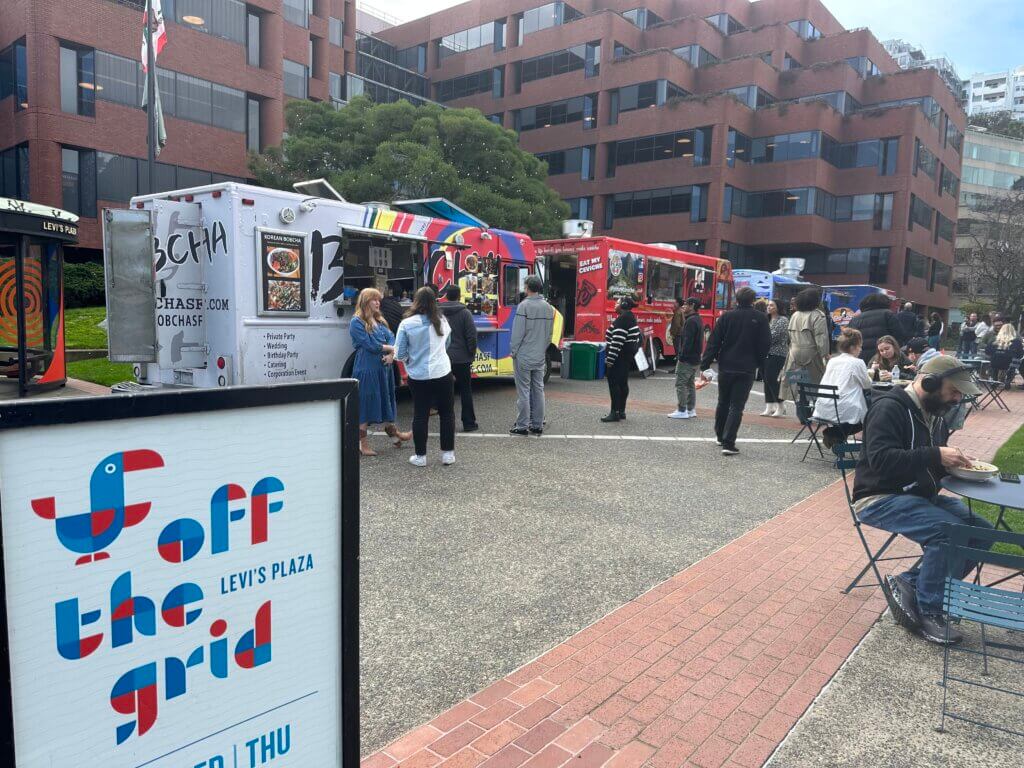
About this time of year, we start seeing articles about various trends we can expect in the upcoming year. The National Restaurant Association predicted that 2020 would bring more plant-based proteins, eco-friendly packaging, healthy bowls, stress-relieving foods, delivery-friendly meals, and revamped classic and low/no-alcohol cocktails, among other things. Who knew that some of those trends would explode while others merely limped along? We all want to return to pre-pandemic eating out and celebrating, but some of 2020’s changes are likely to stick around—which is a good thing! Here are 10 trends we’ll likely see again in 2021 and beyond.
1) We like having food delivered to our door
The National Restaurant Association nailed this one, but the pandemic catapulted this trend into overdrive once the pandemic sunk its claws into our lives. We were already ordering standard takeout fare for delivery using DoorDash, UberEats, Caviar, Tock, Postmates, Grubhub and other platforms. The pandemic forced restaurants that previously hadn’t considered delivery services to rethink their offerings, and now we have more options than ever to savor our favorite restaurant meals at home and work. In addition, many restaurants such as The Italian Homemade Company and The Barrel Room added housemade sauces, groceries and pantry items to their takeout menus, saving us a trip to the store.
2) Restaurants on the move
When we could no longer go out to eat, some restauranteurs created pop-ups and brought food to our neighborhoods. For example, Frena Bakery and Café, in a collab with Hummus Bodega, takes preorders, loads them into a van and follows a weekly schedule of stops all across the Bay Area. Tyler Florence’s Wayfare Tavern publishes a delivery schedule and brings its famous fried chicken to new neighborhoods each week. Our wildly popular food Creator partner Senor Sisig shows up all over the place on a schedule, so when a craving for their Filipino deliciousness hits you, they are never far away.
3) Takeout on steroids—meal kits and award-winning to-go cuisine
High-end, Michelin-starred and other award-winning eateries realized that they needed to pivot—and pivot fast to survive. A year ago, we never would have expected to enjoy meals from establishments such as Atelier Crenn, Quince and Acquerello at home. Another new trend that’s emerged is gourmet meal kits. For example, Lazy Bear offers a weekly five or six-course dinner kit for two, including a wine tasting add-on. What started as a one-time fab collab between Lord Stanley and Mister Jiu’s morphed into a weekly event with five-course meal kits called Lord Jiu’s. And if you’ve been hesitant to order a savory takeout steak, knowing it may arrive lukewarm, check out Mastro’s Cook-at-Home RAW Steak Kits.
4) Ordering groceries and booze online saves time – a LOT of time
Some of us were taking advantage of online grocery and alcohol pickup and delivery services before the pandemic. Once it became less safe to shop in-person (and products became scarce), online buying soared to unimaginable levels. Local and national liquor, beer and wine stores expanded their delivery services, giving us countless options for enjoying happy hour at home—at a far lower cost than going out. Instead of spending half our weekends running errands and grocery shopping, many have come to like the convenience and time saved by ordering online from services such as Instacart, Amazon Fresh and Thrive Market. DoorDash and Instacart also deliver alcohol, and Drizly is a delivery platform that works with local alcohol retailers.
5) Happy hour in the comfort of our home
Until the pandemic, if we wanted to sip our favorite craft beer on tap, try a fancy cocktail at a trendy bar or savor a glass of exquisite vino at a wine bar, we had to make ourselves presentable and go out. Once bars became off-limits, most of us have been stuck at home with limited bartending skills and ingredients. This trend may not continue once restrictions ease and the California Department of Alcoholic Beverage Control clamps back down, but who knows? Maybe they’ll realize there’s less harm in having people knock back a few safely at home instead of out and about, potentially endangering others.
If you’re unsure where to find imaginative to-go drinks, SF Eater has a list of 23 Top Shelf Cocktails to Go in San Francisco. A new company called San Francisco Cocktail Club offers memberships and one-time purchases from its partner restaurants, The Snug, China Live, Nopalito, Padrecito and more. Also, many restaurants list their booze-infused offerings on their online takeout menus.
6) Outdoor dining rocks
As COVID-19 restrictions shuttered indoor dining rooms, restaurants and cafes that lacked an outdoor patio or dining area were left out in the cold. The Bay Area has a reputation for being a land of innovation— and we certainly saw plenty of evidence as restauranteurs converted sidewalks, parking spaces, plazas and even streets into cheerful al fresco dining areas. They strung twinkling lights, placed potted plants around perimeters and set up speakers to play music. We can give our local governments a shoutout for their Shared Spaces initiatives, which permitted these expansions to take place, often without fees.
As the weather cooled, heaters, tents, windscreens and other temporary structures extended the outdoor dining season. Some cities are even considering allowing some plazas and streets to remain permanent outdoor dining areas–yeah! Bay Area diners have discovered that al fresco-sidewalk dining often supersedes indoor dining, creating fascinating opportunities for people watching and a more communal, European vibe. Many restaurants invested big bucks into renovating or expanding their outdoor dining spaces, so dining under the stars (or streetlights) is here to stay.
7) We channeled our inner gourmet chef
Many of us realized that we’re better cooks than we thought—and some of us discovered we actually enjoy the sometimes elaborate process of making a tasty meal. We’ve learned the difference between chopping and mincing, parboiling and poaching, and basting and glazing. In addition to improving our culinary skills, we’ve also become much more creative and adventurous in the kitchen. When store shelves displayed empty spaces where our standard staples once sat, we improvised and substituted with alternatives. We also concocted inventive dishes with ingredients we found lurking at the back of pantries and freezers. We even learned to bake sourdough bread from scratch!
The trend to cook and bake more at home likely won’t end when the pandemic does. According to a Bloomberg News and Morning Consult July survey of 2,200 adults, only about 5 to 9% of adults plan to cook less once things settle down—and a big chunk plans to cook even more often. This trend is particularly high with Gen Z respondents. A more recent study from Acosta found similar results, especially for eating breakfast at home.
8) We are what we eat
Many of us crave comfort foods like mac & cheese, pizza and ice cream (and booze—lots of booze) to soothe our stressed, anxious minds these past several months. However, we’re also recognizing that what we put in our bodies impacts our ability to respond to illness and stress. Natural immunity boosters such as honey, ginger, echinacea, citrus, berries and turmeric have found their way into an eclectic variety of foods and beverages. Plant-based foods such as Beyond Meat and Impossible Foods were already gaining traction, but now they are a mainstay. We no longer must pay absurd prices at fancy natural grocers or restaurants to find high-quality, flavorful vegetarian and vegan food. Nestle, a giant food producer not typically known for creating healthy foods, reported that its sales of plant-based food jumped 40% during the first half of 2020.
Raw and less-processed foods and beverages are also showing up more on menus and in stores. Check out our Creator partner PureJuice Organics’ food truck schedule or order their 100% raw, organic juices for delivery (San Jose area). Another partner, Bowl’d Acai, has their truck out and about too, or you can order their fresh-as-it-gets, immune-boosting acai bowls, smoothies and juices for delivery.
9) Contactless order, deliver and pay is the way
Cool tech such as electronic tablets instead of plastic menus greeted us in many eateries. Once the pandemic steamrolled over us, the need to socially distance and avoid touching surfaces converted contactless tech from a convenience to a necessity. Zillions of restaurants now offer order and pay online and touchless curbside pickup or delivery services, either on their own platforms or on one of the many aggregate ones such as DoorDash. Our Off the Grid Experience App launched in June, allowing customers to order ahead, receive a notification when their food is ready and pay our food truck Creator partners—eliminating the need to wait in line. This trend is most definitely not going away once the pandemic subsides.
10) An explosion of innovation, generosity and solidarity in our local food industry
If 2020 has any silver lining, it’s seeing how individuals, communities and businesses collaborated, shared resources and invested considerable time, effort, and money to find ways to support one another. Companies and individuals who weren’t hit as hard financially opened their wallets—and continue to do so in droves. The movement to “buy local” was gaining momentum before 2020, but now there’s a tidal wave of Bay Area consumers trying to support local food creators by ordering takeout and buying merchandise and gift cards.
We’ve also witnessed incredible resilience and innovation in our food industry this year—would you ever have expected to be dining outside in a downtown street or inside a plastic pod? Restauranteurs found creative ways to create socially distanced tables, from plexiglass dividers, mannequins, cardboard people, pool noodles, innertubes to shower curtains draped over PVC pipes.
Organizations and nonprofits established win-win situations and helped many food producers remain open (and their employees working). Using donations and volunteer support, these organizations pay producers to create meals and deliver them to frontline healthcare workers, forest fire evacuees and firefighters, food-insecure individuals and COVID-vulnerable seniors. Daily across the Bay Area, thousands of volunteers deliver groceries and meals, pack food donation boxes, pick up donated food and provide office support. If you want to learn how you can help, check out our Bay Area Guide to Support Local Food Business post.
Two thumbs-up for these 10 trends to continue
We can finally say farewell to this tumultuous year and turn our sights to the future. However, these 10 trends can stick around and continue to evolve. Except…maybe not the physical barriers we currently need to create socially distanced dining!



